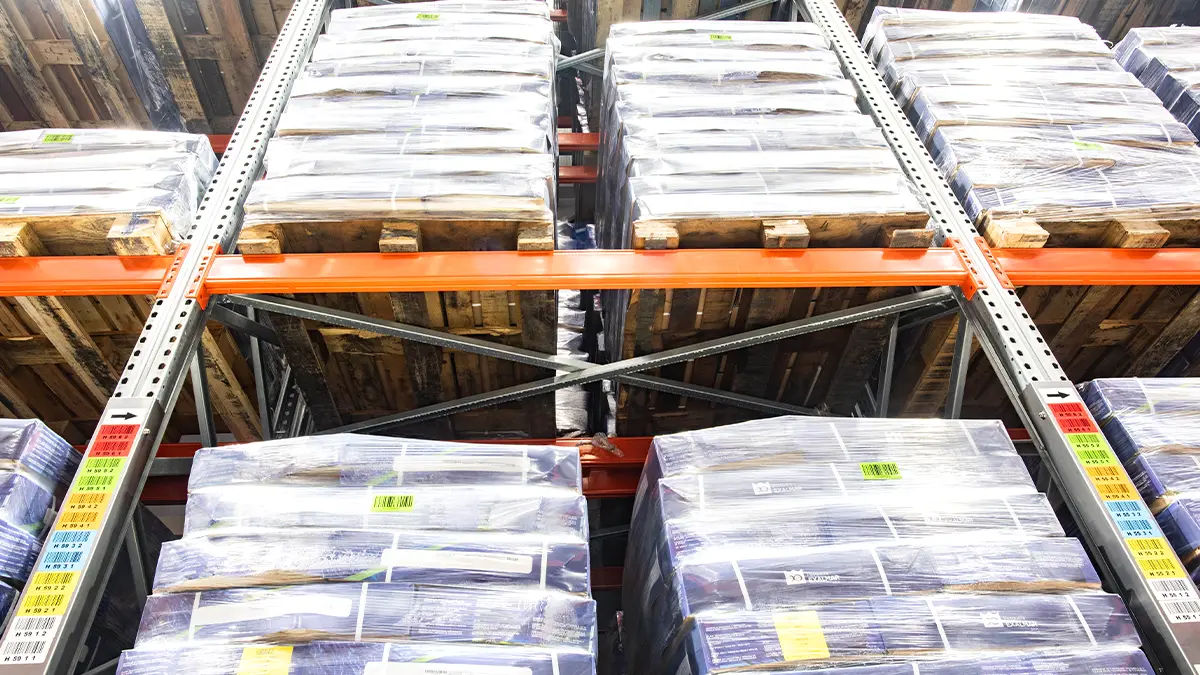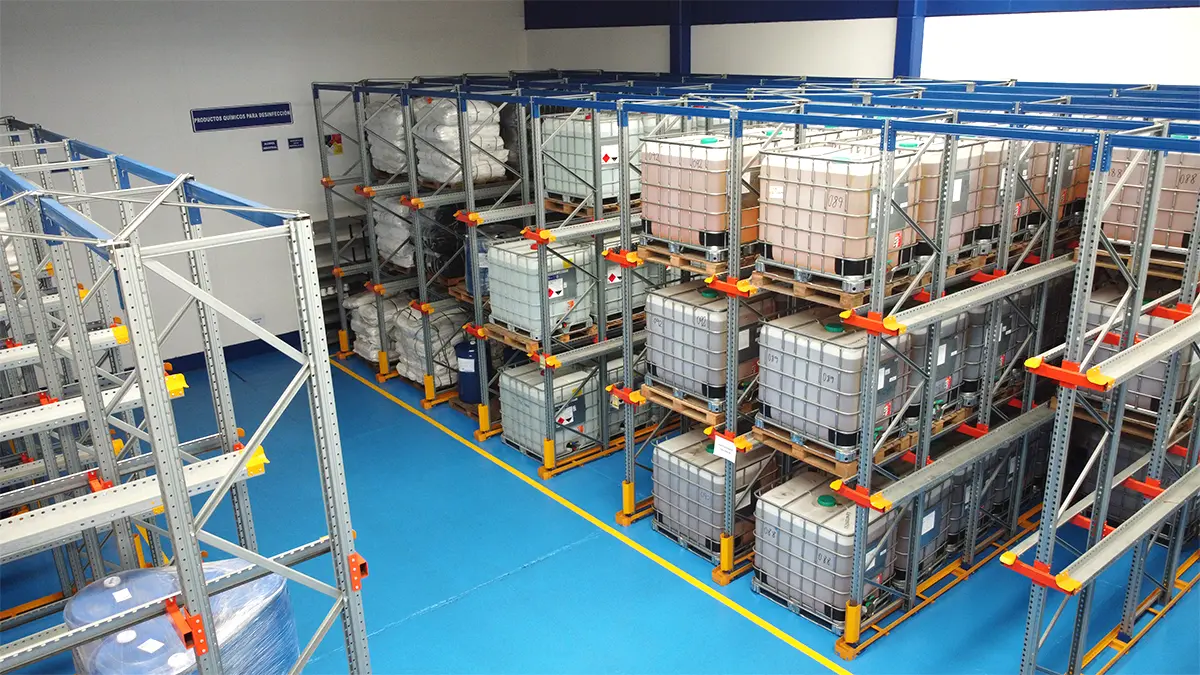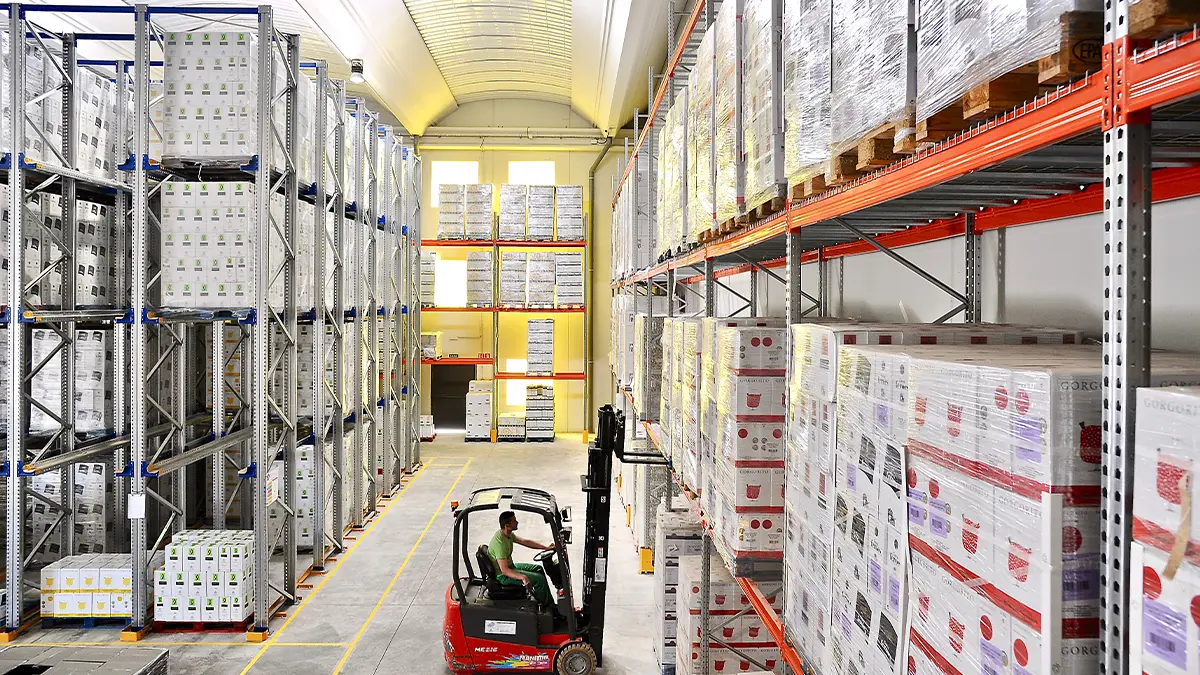Stock or stock inventory is the collection of all the materials and goods stored, whether for use to complete the production process or for sale to the customer. Efficient management of warehouse stock is a challenge for logistics companies or companies that have a warehouse or distribution centre since the management of the stock inventory stored will largely depend on the business’s profitability.
The importance of stock in a warehouse
Stock accumulation and storage is important because, firstly, having stock avoids any shortage in the product the company works with; secondly, the more units, the lower the unit cost of the product in general; and thirdly, having the product stored enables immediate availability to meet the customer’s demand.
What’s more, stock management is just as important as the stock itself. Any imbalance (depletion of stock, excess stock, etc.) in the amount of stock stored may reduce the company’s competitiveness.
Types of stock or inventory
Before addressing the keys to stock management, we will look briefly at the current different types of stock or inventory:
Types of stock from the functional perspective:
- Cycle stock: this is the stock of a warehouse to meet regular demand over a long period of time.
- Safety stock: this is the stock to meet unexpected demand or demand in exceptional circumstances that have caused problems (for example, unexpected delays).
- Seasonal stock: this is the seasonal stock for products with sales that increase sharply at certain times (for example, the typical Spanish sweet “turrón” at Christmas time).
- Recovery stock: these are those products that can be reused partly or totally.
- Dead stock: this is the inventory of obsolete merchandise that cannot be reused and which must therefore be removed from the warehouse.
- Speculative stock: if it is expected that the sales of a particular product are going to increase in the short term, the stock of that product is increased before there is any increase in demand, and it is therefore stored at lower cost.
Types of stock from the operational perspective:
- Optimal stock: the optimal stock level is that stock which offers us maximum profitability. Or rather, it is the stock that maintains the balance between an adequate response to demand and maximum profitability of storage costs.
- Zero stock: it is the amount of stock associated with the Just In Time (JIT) management system, which is characterised by serving on demand, and therefore minimising the inventory of stock in the warehouse. Zero stock is characteristic of the automotive sector.
- Physical stock: physical stock is the amount of stock available at any given moment in the warehouse.
- Net stock: this is the result of subtracting unmet demand from existing stock in the warehouse.
- Available stock: this is the result of adding to the inventory or physical stock in the warehouse and the orders in progress to suppliers less the unmet demand.
Stock management variables
Stock management is the way of organising stock flows in the warehouse. It is highly important for the competitiveness of companies. It must be primarily focused on having an adequate level of stock in the warehouse to competently meet customer demand at an optimal cost for the company.
These are the main variables that affect the stock or inventory management of a warehouse:
- Planning and management of purchases.
- The desired quality of the service.
- The sales forecast.
- The product storage system: finding the ideal industrial storage solution for companies may make the difference in stock management and, therefore, to the viability of the business. Optimising the space in warehouses and distribution centres plays a key role.
- Supplier delivery times.
Inventory management methods
These are the main inventory or stock management systems that logistics companies use:
FIFO (First in First Out) method:
With the FIFO stock management system, the first goods to leave the warehouse racks will be the first ones that entered it. It enables optimum stock rotation and is perfectly adapted to the storage of perishable products.
Some of the industrial racking systems that are adapted to this management method are the live storage systems for pallets and the drive through compact system. The pallet shuttle system is also adapted to this method. To determine whether this is the appropriate method for managing your warehouse stock, discover the advantages of the FIFO system.
LIFO (Last in, First Out) method:
With the LIFO inventory management method, the last unit load to enter the warehouse will be the first one to leave it. It is an ideal method for non-perishable products, that do not expire or lose value over time. The stock is stacked accessibly on the racks, with easy access to it when required without having to move the rest of the unit loads.
The push-back racking or drive in pallet racking systems are ideal solutions for applying the LIFO stock management method in the warehouse. The shuttle system offers plenty of versatility and can also be applied in this stock management system. See more key aspects about the LIFO system.
ABC management method:
In the ABC stock management method, stock is classified into three categories: A, B and C.
- Category A: these are the products of highest stock inventory value and which therefore require closer observation.They normally occupy 20% of stock.The control of this stock is vital to avoid stock depletion and all of the problems associated with this.
Generally, these products occupy the lowest positions of more direct access on the industrial racking.
- Category B: According to the ABC management method,this stock requires less control by the company, as it rotates less, so the inventory is normally updated in batches, not by units. It represents about 30% of warehouse stock.
It is placed at an intermediate height on the racking or in another less central area of the warehouse.
- Category C: these are the items that rotate the least and can represent up to 50% of inventory. This stock is simple to control because it hardly rotates.
Generally, it is replenished as soon as it leaves the warehouse. It normally occupies the highest parts of the racking or other less central areas of the warehouse.
Just In Time (JIT) model:
Any organisation that is managed by the Just in Time (JIT) inventory management model has the just the right amount of raw materials for each moment of the production process, with minimal storage needs. It requires very strict organisation to avoid delays or cause stock depletion. The automotive sector is the clearest example of this.
Wilson’s model or optimal order model:
Wilson's model for stock management determines the volume or quantity of the order to be placed, so as to optimise the stock management system. It is calculated when and in what quantity it is necessary to order the stocks. The mathematical formula takes into account the annual demand for the raw material, the cost of the order and the cost of storage.
Warehouse stock management costs:
A variable to be taken into careful consideration in warehouse stock or inventory management is the cost of managing the stock to the company, which will greatly affect the return.
There are 4 main types of stock costs:
Purchasing or acquisition cost:
This is essentially the amount paid to suppliers for each order made. Generally, this amount will be reduced if the quantity of goods is greater, and will increase if small orders are made.
Cost of making the order:
This category includes the administrative and management costs of each order made by the company.
Stock depletion cost:
This cost must include revenues not generated for not having been able to meet a customer’s demand, but may also imply other types of indirect costs that affect a company’s credibility and potential future lost orders.
Stock maintenance cost
The mere fact of having product in stock in the warehouse generates a cost for companies which will make it necessary to include staff costs, warehouse management system costs, storage system installation costs, the rental or purchase of the warehouse and its monthly expenses, depreciations and insurance and the possible depreciation of stored stock.
In conclusion, warehouse stock management is a differentiator in an organisation’s performance and there are many factors to consider when deciding how to manage the flow of goods: the type of stock, resources to control it, planning and forecasting of purchases, relationship with suppliers and the storage capacity of the facilities.













